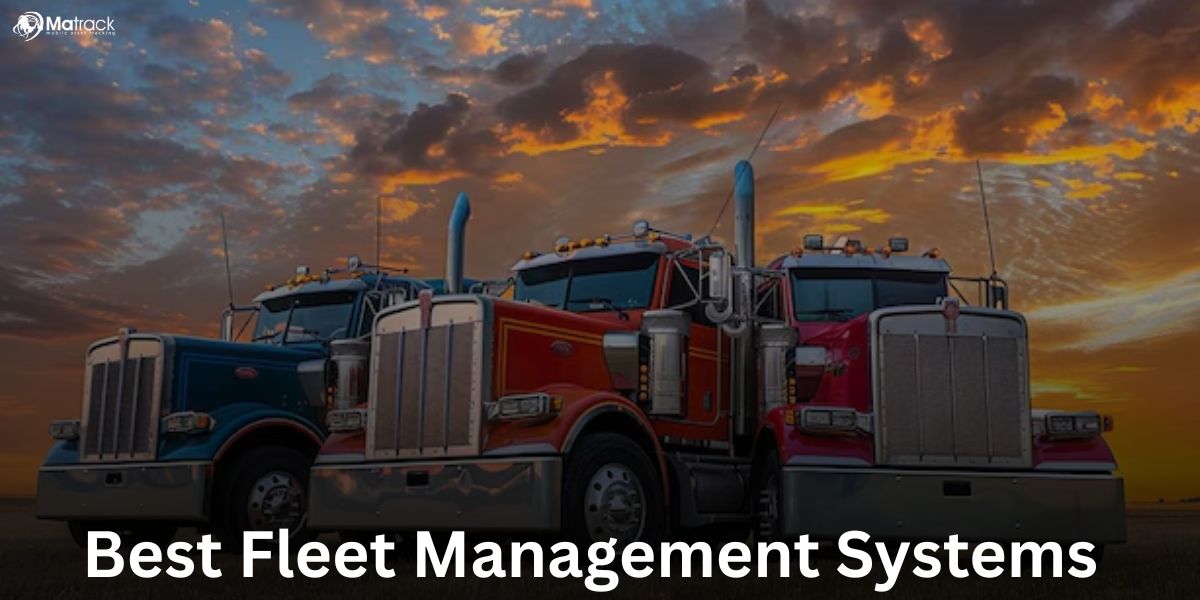Key Takeaways:
- Fleet asset management tracks, maintains, and replaces vehicles and equipment to reduce costs and improve uptime.
- Core components include asset acquisition, tracking, maintenance, compliance, and end-of-life disposal.
- Key metrics like utilization rate, MTBF, and fuel efficiency guide decisions and performance reviews.
- Matrack offers the most complete system with real-time tracking, cost control, and compliance tools for all fleet sizes.
What is fleet asset management?
Fleet asset management is the structured process of acquiring, operating, monitoring, maintaining, and retiring all mobile and fixed fleet assets. It applies to trucks, vans, trailers, forklifts, fuel systems, and telematics hardware used in daily operations.
The goal of fleet asset management is to increase asset lifespan, reduce operating costs, and ensure full availability. Fleet managers achieve this through data tracking across over 15 metrics like mileage, fuel use, maintenance history, and asset condition.
Related: What is Vehicle Fleet Management?
What are the core components of fleet asset management?
Asset Acquisition
Asset acquisition involves purchasing or leasing vehicles based on usage requirements and total lifecycle cost. Fleets select assets like light-duty trucks, refrigerated vans, or hybrid sedans to meet operational needs efficiently.
Asset Tracking
Asset tracking uses GPS, RFID, and IoT sensors to collect real-time data on each fleet asset. It provides visibility into location, idle time, and fuel usage to ensure performance and accountability.
Maintenance Scheduling
Maintenance scheduling prevents unplanned failures by organizing service tasks before breakdowns occur. Routine activities include oil changes, brake inspections, and battery checks based on usage intervals.
Compliance Documentation
Compliance documentation manages all legal and operational records required for safe fleet operation. These include vehicle registrations, inspection logs, insurance files, and driver certification documents.
Asset Retirement
Asset retirement removes underperforming or end-of-life assets through resale, auction, or recycling processes. This step recovers value while clearing space for newer, more efficient replacements.
What are the types of fleet assets managed?
Vehicles
Vehicles include trucks, sedans, SUVs, and motorcycles used for transport, delivery, or fieldwork. Fleets rely on them in logistics networks, sales operations, and public sector mobility.
Equipment
Equipment covers trailers, generators, and cranes essential for operational support in the field. Their use is widespread across construction zones, utility projects, and industrial sites.
Infrastructure
Infrastructure includes charging stations, fuel storage points, and maintenance garages that support daily operations. Each facility ensures that fleet vehicles stay powered, serviced, and road-ready.
What are the key metrics in fleet asset management?
Utilization Rate
Utilization rate tracks the percentage of time an asset is actively in service versus idle engine. High utilization indicates effective deployment and resource planning.
Mean Time Between Failures (MTBF)
MTBF measures the average operational time between equipment breakdowns. A higher MTBF reflects greater reliability and fewer unplanned disruptions.
Maintenance Cost per Mile
Maintenance cost per mile calculates how much is spent on repairs and upkeep for every mile traveled. This helps assess cost-efficiency and predict long-term expenses.
Asset Availability
Asset availability shows how often vehicles or equipment are ready for use when needed. It’s expressed as a percentage of total scheduled time.
Fuel Consumption Rate
Fuel consumption rate monitors how efficiently each asset uses fuel, measured in miles per gallon or liters per 100 kilometers. This metric helps control fuel costs and identify underperforming vehicles.
How to implement a fleet asset management system?
Identify All Assets
Start by listing every asset in the fleet, including vehicles, equipment, and fixed infrastructure. Record serial numbers, purchase dates, and current usage details.
Define Performance Metrics
Choose measurable indicators like utilization rate, fuel efficiency, and maintenance cost per mile. These metrics guide decision-making and highlight inefficiencies.
Deploy Asset Management Software
Use a centralized platform to track assets, schedule tasks, and generate performance reports. The software should support real-time alerts and full asset lifecycle tracking.
Install Tracking Hardware
Equip each vehicle with telematics systems and onboard data terminals. This enables accurate location monitoring and real-time data collection.
Train Staff and Drivers
Train your drivers and staff on how to log data, follow workflows, and report asset issues. Standard operating procedures should be documented and regularly reviewed.
Review Performance Quarterly
Analyze key performance indicators every 90 days to detect trends and correct issues. Adjust asset strategies based on usage data and operational goals.
What are the benefits and challenges of fleet asset management?
| Benefits of Fleet Asset Management | Challenges of Fleet Asset Management |
| Reduces maintenance costs through preventive scheduling | Requires integration of multiple data systems |
| Increases asset lifespan by tracking wear and usage | Demands consistent data input from staff |
| Improves fuel efficiency with real-time monitoring | Complexity in managing large or diverse fleets |
| Enhances compliance with automated documentation | High initial setup cost for digital tools |
| Boosts uptime with better asset allocation | Ongoing updates needed to meet changing regulations |
What is the best fleet asset management?
Matrack is the best fleet asset management platform for businesses that need real-time visibility and control. It combines GPS fleet tracking, usage analytics, and automated alerts to keep every asset performing at its best.
One reason Matrack stands out is its ability to lower operational costs while extending asset life. By monitoring fuel efficiency, idle time, and maintenance intervals, it helps prevent downtime and reduce unnecessary repairs.
Fleet operators prefer Matrack because it simplifies compliance and scales across different fleet sizes. The system supports features like ELD logging, IFTA tracking, and customizable reporting, making it ideal for growing or regulated fleets.

